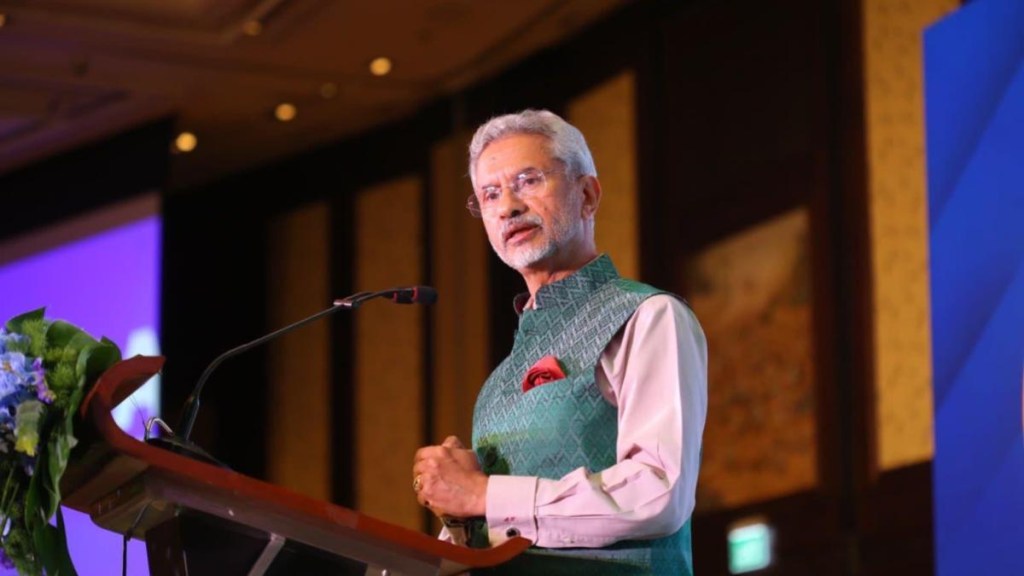By Anita Inder Singh,
Official statements often conceal more than they reveal, so the apparent unity of the foreign ministers of the Quadrilateral Security Dialogue on July 29 in Tokyo masked some disagreements between India and its Quad partners — America, Japan, and Australia — on Russia’s invasion of Ukraine, but highlighted agreement on a free, open, and secure Indo-Pacific.
India has strong trade and investment with its Quad partners: it even has a free trade agreement with Australia. But undercurrents of friction between them are coming out into the open, especially over India’s neutrality on Russia’s war in Ukraine.
This became obvious when Eric Garcetti, America’s ambassador in New Delhi, said on July 10, just two days after Prime Minister Narendra Modi’s trip to Russia that there was no strategic autonomy in conflict. The differences existed even before that. More than two years ago, External affairs minister Subrahmanyam Jaishankar said, with reference to Russia’s illegal assault on Ukraine on June 3, 2022, that Europe should grow out of the mindset that its problems were the world’s problems.
Only a week later, Japan and India were poles apart when Japanese Prime Minister Fumio Kishida said Ukraine today could be Asia tomorrow. Generally, Asia-Pacific countries are afraid that China will see how the West handles the Ukraine crisis to assess its chances of taking over Taiwan and indulging in expansionist activities in their region.
Japan joined the West in imposing sanctions on Russia and will also sell Patriot missiles to Ukraine. The Quad foreign ministers backed the territorial integrity of Ukraine, unlike Modi and President Vladimir Putin during their summit in Moscow from July 8-9. Ukraine’s territorial integrity was
not mentioned in Russian and Indian joint statements, which mentioned the conflict “around Ukraine” rather than
in Ukraine. All told, however, India’s strong backing for the principle of “territorial integrity” is essential, if only because it applies to its state frontiers with Pakistan and China — and China’s boundaries with other Asian neighbours — as much as it applies to Europe. New Delhi does not believe that solutions will emerge on the battlefield. That message should be directed more strongly towards the aggressor, which is Russia.
Differences with Japan, an important Asian friend, and since long, far more economically advanced than China, which threatens the territory of both countries, have also been apparent in other ways. In June, friendly Japan sanctioned an Indian tech company, Si2 Microsystems, based in Bengaluru, for its alleged role in helping Russia evade Western sanctions imposed because of its invasion of Ukraine. (Companies in China, Kazakhstan, the UAE, and Uzbekistan were also sanctioned).
As for China, the Quad foreign ministers did not name it in their communiqué, but fear of Chinese imperialism in the South China Sea and against Taiwan has led the US, Japan, the Philippines, and South Korea to upgrade their defence ties. On July 28, the US revamped its military command in Japan, giving Japan a “direct leadership role” over American forces in operational planning in both peacetime and in potential crises. The US has also pledged $500 million in military support to the Philippines amid South China Sea disputes.
On the security front, the Quad foreign ministers also stressed the importance of adherence to international law, particularly as reflected in the United Nations Convention on the Law of the Sea, to address challenges to the global maritime rules-based order, including in the South and East China Seas. They reiterated their strong opposition to “any unilateral actions that seek to change the status quo by force or coercion”. China remained the elephant in the room.
Beijing’s official Global Times sarcastically commented that hyping up the “China-threat” rhetoric is “a typical US way of inciting security anxiety”, so as to make some regional countries rely more on the US-led bloc. The Quad, it pointed out, is a partnership, but not yet an alliance. (It did not say because of India, probably because it was blaming America). Beijing sees the Quad becoming “ a major source of creating antagonism and confrontation in the Asia-Pacific region”.
India’s Quad partners and several Southeast Asian countries wish to intensify measures to counterbalance Beijing. The South China Sea may be far away from India, but remains crucial for India’s strategic interests, including energy security.
And if the US strengthens military bonds with allies, India benefits from the general build-up in Asia against China, without contributing much to security outside its immediate Indian Ocean neighbourhood. All the more so as India is not getting closer to resolving its border dispute with China. Nor is it getting closer to dealing with its trade deficit surpassing $38.11 billion in the initial five months of the current year.
US support for the centrality of the Association of Southeast Asian Nations (Asean) in the Indo-Pacific leads other Quad members to follow suit. India declared that political, economic, and security cooperation with Asean is its top priority. But India has tended to view itself as the centre of the Indo-Pacific because Delhi thinks the word ‘Indo” implies India. This interpretation has never been accepted by Asean or any Quad partner. Even if India is the only non-ally in the Quad, “Acting East” should lead to strengthening economic and ties with Southeast Asian countries, against China, which is the main threat to their security and India’s. And the UN Charter and the territorial integrity of states must always be respected. Those were the main messages of the Quad foreign ministers’ meeting.
The author is Founding professor at Centre for Peace and Conflict Resolution.
Disclaimer: Views expressed are personal and do not reflect the official position or policy of FinancialExpress.com. Reproducing this content without permission is prohibited.

